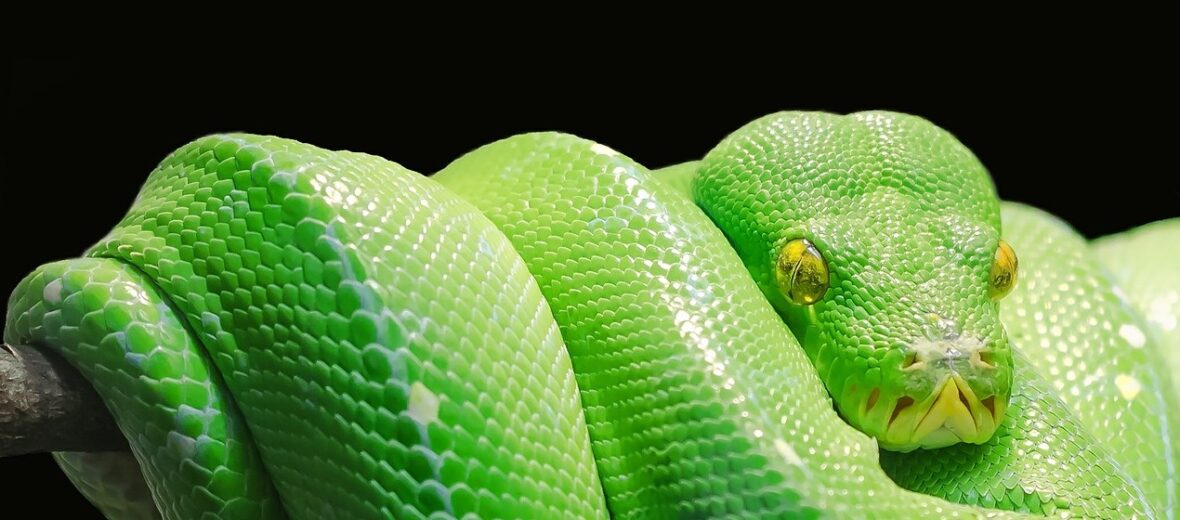
The emerald tree boa, aka green tree boa or emerald boa, hails from the Guianan regions and the Amazon River basin in South America and prefer the tropical rainforest lifestyle. These beautiful green serpents tend to have a bit of an attitude and thus don’t make great choices as pets. However, they are routinely captured for the exotic pet trade. Fortunately, they are listed as Least Concern by the IUCN, due to stable numbers. But they do suffer at the hands of the previously mentioned over-collection and habitat loss.
First the Stats…
Scientific name: Corallus caninus
Weight: Up to 3.3 lbs.
Length: Up to 6 feet
Lifespan: Up to 15 years
Now on to the Facts!
1.) As their name suggests, these snakes are arboreal (spend their lives in trees).
2.) Green tree boas are nocturnal (active at night).
3.) Emerald boas are ambush predators that sit motionless for hours waiting on passing prey to happen by.
4.) Like other boas, they are solitary, only coming together to mate.
5.) A group of snakes is called a pit, bed, den, nest, or knot.
But wait, there’s more on the emerald tree boa!
6.) These snakes prey on bats, rats, mice, squirrels, lizards, frogs, and even smaller primate species.
7.) Being boas, they aren’t venomous, but rather rely on constriction to kill their prey.
Did you know…?
The emerald tree boa has the longest teeth of any other known boa constrictor. It appears as though they have fangs. But fangs are a term associated with teeth connected to venom glands. Boas are not venomous.
8.) Females are ovoviviparous (give live birth to babies that hatch from eggs inside her body).
9.) The female will birth up to 20 live young that are precocial (born totally self sufficient).
10.) In comparison to other boas, emerald tree boas possess more heat receptor pits.
Now a Short Emerald Tree Boa Video!
Be sure to share & comment below! Also, check out the Critter Science YouTube channel. Videos added frequently!
Want to suggest a critter for me to write about? Let me know here.



